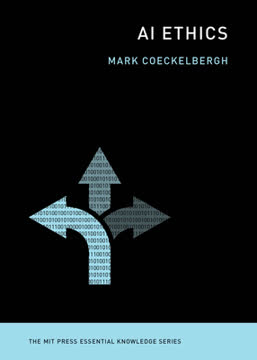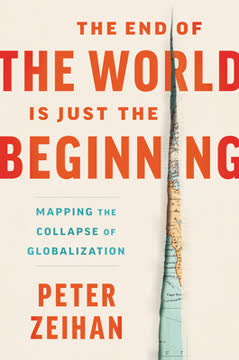Key Takeaways
1. Information Theory Revolutionizes Economics and Technology
"Information theory treats human creations or communications as transmissions through a channel, whether a wire or the world, in the face of the power of noise, and gauges the outcomes by their news or surprise, defined as 'entropy' and consummated as knowledge."
Paradigm shift. Information theory, pioneered by Claude Shannon, provides a new framework for understanding economics and technology. It shifts focus from material resources to the flow of information and ideas. This perspective explains economic growth as a function of surprise and innovation rather than mere accumulation of capital or labor.
Practical applications. The theory has already transformed industries:
- Telecommunications: Enabled efficient data transmission
- Computing: Laid groundwork for digital revolution
- Finance: Revolutionized risk assessment and trading strategies
By viewing the economy as an information system, we gain new insights into value creation, innovation, and the nature of entrepreneurship.
2. Entropy as the Measure of Economic Creativity and Innovation
"Entropy is a measure of surprise, disorder, randomness, noise, disequilibrium, and complexity. It is a measure of freedom of choice. Its economic fruits are creativity and profit."
Redefining economic value. In information theory, entropy measures the unpredictability or surprise in a message. Applied to economics, it quantifies the creative potential and innovative capacity of an economy. High-entropy systems are rich in possibilities and ripe for breakthroughs.
Implications for business and policy:
- Encouraging experimentation and risk-taking
- Valuing diverse ideas and approaches
- Fostering environments that allow for unexpected outcomes
This perspective challenges traditional economic metrics focused on stability and predictability, suggesting that some degree of "chaos" is essential for progress.
3. The Fallacy of Demand-Side Economics and the Power of Supply
"Supply creates its own demand is the sequence and the cosmology that distinguishes the free from the socialist economy."
Challenging Keynesian orthodoxy. Gilder argues against the dominant demand-side economic theories, asserting that innovation and production (supply) drive economic growth, not consumption (demand). This view turns conventional wisdom on its head, suggesting that policies focused on stimulating demand may be misguided.
Supply-side revolution:
- Emphasizes the role of entrepreneurs in creating new markets
- Highlights the importance of reducing barriers to production
- Suggests tax cuts and deregulation as growth catalysts
This perspective shifts focus from manipulating aggregate demand to fostering an environment where innovators can thrive and create new value.
4. Entrepreneurship as the Engine of Economic Growth
"Entrepreneurship is the launching of surprises. What bothers many critics of capitalism is that a group like the 1 percent is too full of surprises."
Celebrating creators. Entrepreneurs are the driving force of economic progress, introducing new ideas, products, and services that disrupt existing markets and create new ones. Their ability to surprise and innovate is key to economic dynamism.
Characteristics of successful entrepreneurs:
- Willingness to take risks
- Ability to see opportunities others miss
- Persistence in the face of failure
- Skill in marshaling resources and talent
This view challenges the notion that economic growth is primarily about resource allocation, instead emphasizing the role of human creativity and ingenuity.
5. The Learning Curve: Key to Capitalism's Success
"The experience curve charts the increase in prowess with experience and scale in the provision of any product, from pins to cookies, insurance policies to phone calls, pork bellies to chicken broilers, steel ingots to airplanes."
Continuous improvement. The learning curve concept, developed by Bruce Henderson and refined by others, explains how costs decrease and efficiency increases as cumulative production grows. This phenomenon is central to understanding long-term economic growth and competitive advantage.
Key aspects of the learning curve:
- 20-30% cost reduction with each doubling of production
- Applies to both manufacturing and service industries
- Drives innovation and productivity gains
Understanding and leveraging the learning curve is crucial for businesses seeking to maintain competitiveness and for policymakers aiming to foster economic growth.
6. Knowledge and Power Must Be Aligned for Economic Prosperity
"Capitalism is not chiefly an incentive system but an information system."
Information is key. Gilder argues that the true strength of capitalism lies not in its incentive structure but in its ability to efficiently process and act on information. This view emphasizes the importance of decentralized decision-making and the freedom to experiment.
Crucial elements for aligning knowledge and power:
- Decentralized economic systems
- Protection of property rights
- Free flow of information
- Limited government intervention
This perspective challenges centralized planning and top-down economic management, suggesting that prosperity emerges when those with knowledge are empowered to act on it.
7. The Danger of Government Intervention in Free Markets
"High-entropy regulation destroys the environment that it seeks to enhance."
Unintended consequences. While well-intentioned, government interventions often disrupt the delicate information processing system of the market. Regulations, subsidies, and other interventions can create noise that drowns out important market signals.
Examples of harmful interventions:
- Excessive financial regulations stifling innovation
- Environmental regulations that hinder technological progress
- Subsidies that distort market incentives
Gilder argues for a more hands-off approach, allowing market forces to guide economic development with minimal interference.
8. Israel as a Model of Information-Based Economic Success
"Israel is consolidating its global supremacy, behind only the United States, in an array of leading-edge technologies."
Innovation powerhouse. Israel's economic success, despite its small size and lack of natural resources, exemplifies the power of an information-based economy. The country's focus on education, research, and entrepreneurship has led to remarkable achievements in technology and innovation.
Key factors in Israel's success:
- Strong emphasis on STEM education
- Culture of risk-taking and entrepreneurship
- Significant investment in R&D
- Leveraging of global diaspora networks
Israel's example offers lessons for other countries seeking to build knowledge-based economies in the 21st century.
9. The Imperative of Low-Entropy Carriers for High-Entropy Creation
"It takes a low-entropy carrier to bear high-entropy creations."
Stability enables creativity. Gilder argues that innovative, high-entropy creations require stable, low-entropy foundations. In economics, this translates to the need for reliable institutions, clear rule of law, and stable monetary systems to foster entrepreneurial activity.
Examples of low-entropy carriers:
- Consistent legal frameworks
- Stable currencies
- Reliable infrastructure
- Predictable regulatory environments
This concept emphasizes the importance of creating a stable backdrop against which innovation and creativity can flourish.
10. The Future of Innovation Lies in Information-Based Technologies
"Information theory will transform every science and technology."
Paradigm shift. As we move deeper into the information age, Gilder predicts that information theory will become increasingly central to innovation across all fields. This shift will lead to new breakthroughs and reshape our understanding of economics, technology, and even biology.
Emerging areas of information-based innovation:
- Artificial intelligence and machine learning
- Quantum computing
- Biotechnology and personalized medicine
- Advanced materials science
This perspective suggests that future economic growth and technological progress will be driven by our ability to harness and manipulate information in novel ways.
Last updated:
FAQ
What is Knowledge and Power: The Information Theory of Capitalism and How it is Revolutionizing our World by George Gilder about?
- Core theme: The book redefines capitalism as an information system, where economic growth and wealth creation are driven by entrepreneurial knowledge, creativity, and the interplay of knowledge and power.
- Information theory foundation: Gilder applies Claude Shannon’s information theory, viewing information as surprise or entropy, and argues that economic progress depends on the transmission of high-entropy (unexpected) information.
- Structure and scope: The book is organized into three parts—The Theory, The Crisis, and The Future—covering foundational economic ideas, analysis of financial crises, and prospects for future growth through knowledge and innovation.
- Critique of traditional economics: Gilder challenges equilibrium-based and demand-side models, emphasizing the centrality of surprise, innovation, and entrepreneurial creativity in real economic systems.
Why should I read Knowledge and Power by George Gilder?
- Groundbreaking economic perspective: The book offers a fresh, information-driven view of capitalism, explaining why traditional economic theories often fail to account for growth, innovation, and crises.
- Insight into financial crises: Gilder provides a unique explanation of the 2008 financial crisis and other economic failures, focusing on information mismatches and regulatory noise.
- Practical relevance for entrepreneurs: Readers gain a deeper understanding of how technology, venture capital, and entrepreneurial innovation shape modern economies and future growth.
- Policy implications: The book equips readers to critically assess tax policy, regulation, and government intervention, highlighting the importance of decentralization and supply-side reforms.
What are the key takeaways of Knowledge and Power by George Gilder?
- Capitalism as an epistemic system: Economic progress is driven by the linkage of knowledge and power, with entrepreneurs reinvesting profits based on superior knowledge.
- Information entropy and surprise: High-entropy, surprising information—generated by entrepreneurs—fuels innovation and growth, not predictable equilibrium or government planning.
- Government as a source of noise: Excessive regulation and intervention distort information flow, suppress entrepreneurial knowledge, and lead to inefficiency and crises.
- Giving precedes exchange: Capitalism begins with entrepreneurial giving—investments made without guaranteed returns—which creates value and drives economic progress.
What is the "information theory of capitalism" as defined in Knowledge and Power by George Gilder?
- Information as surprise: Drawing from Claude Shannon, Gilder defines information as entropy or surprise—the unexpected elements that carry knowledge and drive economic change.
- Low-entropy carriers: Stable institutions like law, property rights, and sound money serve as low-entropy carriers, enabling the transmission of high-entropy (innovative) information.
- Entrepreneurship centrality: Entrepreneurs are the primary creators of new information, disrupting equilibrium and generating profits that reflect the entropy of innovation.
- Markets as information systems: Economic transactions are exchanges of knowledge, with markets coordinating dispersed information rather than just money.
How does Knowledge and Power by George Gilder explain the role of entrepreneurs in capitalism?
- Creators and givers: Entrepreneurs invest resources without guaranteed returns, creating surprising gifts that meet unexpressed needs and drive economic growth.
- Knowledge and commitment: Their wealth is a result of superior knowledge and the ability to reinvest profits wisely, not mere greed or privilege.
- Profit as altruism index: Profits reflect the value created for others, serving as an index of entrepreneurial altruism and successful knowledge application.
- Continuous reinvestment: Entrepreneurs are bound to their enterprises, able to keep wealth only by continually investing in others and serving customers.
How does Knowledge and Power by George Gilder critique traditional economic theories like Keynesianism and equilibrium models?
- Demand-side limitations: Gilder argues that Keynesian focus on demand and government spending ignores the supply-side role of knowledge and innovation.
- Equilibrium fallacy: Traditional models assume predictable markets and perfect knowledge, overlooking the creative disruptions and surprises central to real economic dynamics.
- Information mismatch: These models fail to account for the dispersed, entrepreneurial knowledge that fuels progress, leading to policy errors and economic crises.
- Policy consequences: Overreliance on equilibrium and demand management results in regulatory noise and stifled innovation.
What is the concept of "entropy economics" in Knowledge and Power by George Gilder?
- Entropy as economic freedom: Entropy measures freedom of choice, surprise, and innovation, contrasting with order and predictability.
- High-entropy supply side: Entrepreneurial creativity and innovation are high-entropy processes that disrupt markets and generate above-normal profits.
- Low-entropy carriers: Stable institutions provide the necessary framework for transmitting high-entropy economic information.
- Economic vitality: The balance between high-entropy innovation and low-entropy order is essential for sustained economic growth.
How does Knowledge and Power by George Gilder explain the 2008 financial crisis and banking failures?
- Information mismatch: The crisis stemmed from a mismatch between low-entropy money (stable) and high-entropy investments (risky), leading to a breakdown in trust and liquidity.
- Regulatory noise: Excessive and complex regulation increased noise, obscuring vital information and misaligning knowledge and power.
- Cronyism and mismanagement: Large banks engaged in risky trading with government backing, while prudent banks survived by relying on intimate borrower knowledge and conservative lending.
- Critique of bailouts: Government bailouts reinforced crony capitalism, favoring large banks at the expense of smaller, more responsible institutions.
How does Knowledge and Power by George Gilder relate technology and information theory to economic growth?
- Transcending physical limits: Information theory enables technologies to overcome physical constraints, as seen in advances like Qualcomm’s CDMA.
- Learning curves and Moore’s Law: Exponential technological advances and learning curves drive market expansion and economic growth, emphasizing the supply side.
- Virtualization and markets: Information technology virtualizes manufacturing and services, extending markets and enabling unprecedented economic dynamism.
- Innovation as high-entropy: Technological progress is driven by high-entropy, creative surprises rather than incremental efficiency.
What insights does Knowledge and Power by George Gilder provide on tax policy and economic growth?
- Tax cuts unleash creativity: Lower marginal tax rates increase capital for investment, reduce tax avoidance, and enable more entrepreneurial experiments.
- Flat tax success: Countries with flat or low-rate tax systems experience faster growth and higher revenues, while high-tax countries face stagnation.
- Beyond incentives: The real effect of tax cuts is empowering entrepreneurs to acquire and apply knowledge more effectively, not just changing incentives.
- High taxes suppress information: Progressive taxation and heavy regulation destroy information flow and entrepreneurial energy, undermining capitalism’s foundations.
How does Knowledge and Power by George Gilder explain the relationship between knowledge, power, and economic prosperity?
- Dispersal of knowledge and power: Prosperity depends on widely dispersed knowledge and power, enabling effective decision-making and innovation.
- Government as noise: Concentrated government power distorts signals and suppresses entrepreneurial knowledge, hindering economic growth.
- Ownership and responsibility: Ownership links knowledge with power, motivating wise investment and continuous learning.
- Capitalism vs socialism: Capitalism aligns knowledge and power in entrepreneurs, while socialism separates them, stifling innovation and destroying value.
What are the best quotes from Knowledge and Power by George Gilder and what do they mean?
- On knowledge economies: “Economic transactions are purchases and sales of knowledge from one another, because we are each so profoundly ignorant of what it takes to complete the whole process of which we are a part.” This highlights the centrality of knowledge exchange in markets.
- On capitalism’s essence: “Capitalism begins not with taking but with giving to others.” Gilder emphasizes that entrepreneurial investment is a form of altruistic giving that drives growth.
- On entrepreneurial wealth: “Most of America’s leading entrepreneurs are bound to the masts of their enterprises. They are allowed to keep their wealth only as long as they invest it in others.” This illustrates the responsibility and reinvestment inherent in capitalist success.
- On government and economic decline: “We have a high-entropy carrier (government) and a consequently low-entropy message (a stagnant economy). This is the opposite of how a successful information society should be run.” Gilder critiques government’s role as a suppressor of economic vitality.
- On information and markets: “Information wants to spread freely, and the more information that is incorporated in stock prices, the more robust the market can be and the less subject to manipulation, euphoria, and panic.” Gilder advocates for freer flow of information to improve market efficiency.
Review Summary
Knowledge and Power by George Gilder explores the application of information theory to capitalism. Reviewers appreciate Gilder's innovative approach, linking entrepreneurship and economic growth to information flow. Many find his arguments against government intervention and critique of traditional economic theories compelling. However, some criticize his partisan stance and dismissal of opposing views. The book's dense writing and complex ideas receive mixed reactions, with some praising its intellectual depth while others find it challenging to follow. Overall, readers consider it a thought-provoking, if controversial, contribution to economic discourse.
Similar Books









Download PDF
Download EPUB
.epub digital book format is ideal for reading ebooks on phones, tablets, and e-readers.






